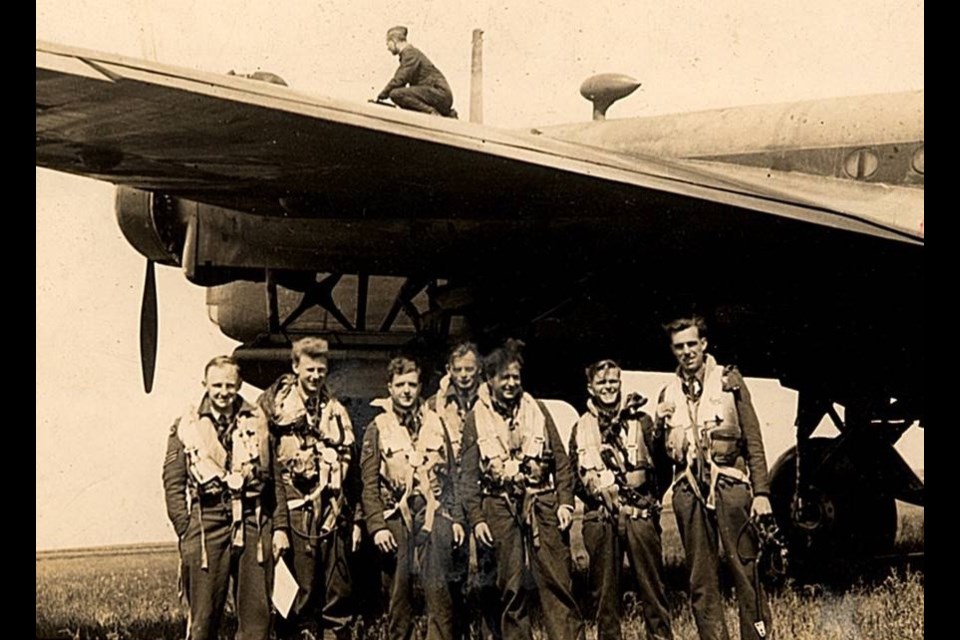Almost 75 years to the day he died, Flight Sgt. Hugh Coles MacMillan will be honoured where he lost his life during the Second World War.
The mournful strains of a bagpiper and bugler will be part of a memorial service Aug. 5 in a field in Limburgerhof, Germany where MacMillan’s Canadian relatives will travel to be joined by local and military dignitaries.
The service will take place at the ‘almost forgotten’ crash site where MacMillan, an airman from Nobel near Parry Sound, was killed along with six others from Great Britain and New Zealand when their R.A.F. bomber of 90 Squadron crashed on the night of Sept. 5/6, 1943.
Fourteen relatives of the other crew members will also attend.
“The mayor of Limburgerhof has agreed to unveil the memorial stone and plaque,” said Dutch national and researcher Erik Wieman.
“Afterwards, a memorial service will take place on the crash site in which the memorial stone for the airmen killed in action will be consecrated by a pastor.”
The dedication ceremony marks the end of a long, determined journey for Wieman.
He is co-founder of a volunteer research team called IG Heimatforschung Rheinland-Pfalz.
The group recovers remnants from crash sites and provides the families of airmen killed in action with keepsakes of the wreckage.
They have discovered over 20 wrecks, including the site of MacMillan's R.A.F. bomber.
In Nov. of 2016, Wieman put out a call for help to local media to find MacMillan’s family members to tell them about the project.
MacMillan was the only Canadian on board and his relatives were the final piece of the puzzle Wieman needed to complete his mission.
“Now our final goal is coming close - a memorial at the crash site. And some of the families are attending,” Wieman said.
MacMillan's neices were located in Toronto in January.
The memorial service will be part of an ”Archaeological Discovery Program" that features around 100 events and excursions to the sites where Wieman’s team made archaeological finds.
“Through the Archaeological Services the site will be shown and explained to interested people with the story, the background of the crash, who exactly died there, what happened there, what was found, and several small finds will be shown,” Wieman said.
Wieman and his team have learned the powerful impact of giving even a small plane part from a crash site to families, creating a tangible connection to their lost loved ones.
The memorial will be permanent tribute to the young war heroes who were shot down.
"We want to tell all passersby about the history of the site and the fates behind it. So these men who died here will not be forgotten again."
